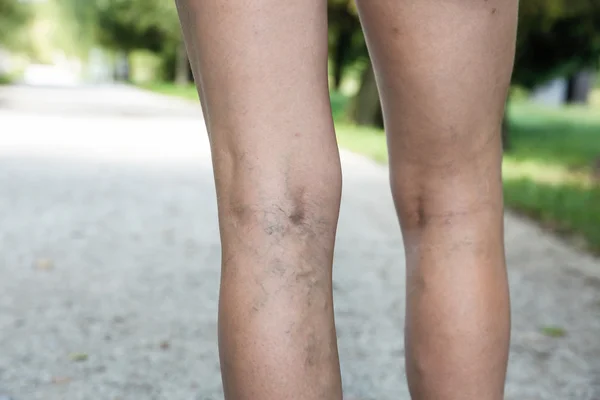4 Simple Things Spider Veins Are Telling You About Your Health – Spider veins, also known as telangiectasias are small, dilated blood vessels that appear near the surface of the skin. They are usually blue, red, or purple in color, and can be either isolated or clustered together. They are more common in women than in men and can be a cosmetic concern for some people.
Risk Factors for Spider Veins
There are several risk factors that can contribute to the development of spider veins, including:
- Genetics: If someone in your family has spider veins, you are more likely to develop them.
- Age: Spider veins are more common in people over the age of 50.
- Pregnancy: Hormonal changes and increased pressure on the veins during pregnancy can lead to the development of spider veins.
- Obesity: Extra weight can put pressure on the veins, leading to the development of spider veins.
- Standing or sitting for long periods of time: This can also put pressure on the veins, leading to the development of spider veins.
Also read | 5 Warning Signs Of Prostate Cancer – How To Catch It Early
4 Simple Things Spider Veins Are Telling You About Your Health
1. Hormonal Imbalances and Spider Veins
Hormonal imbalances, such as those that occur during puberty, pregnancy, and menopause, can contribute to the development of spider veins. During these times, there are changes in the levels of estrogen and progesterone in the body, which can weaken the blood vessels and lead to their dilation.
2. Spider Veins and Heart Disease
Research has shown that spider veins may be an indicator of an increased risk of heart disease. In one study, people with spider veins had a 68% higher risk of developing cardiovascular disease than those without spider veins. This may be because the same factors that contribute to the development of spider veins, such as obesity and a sedentary lifestyle, also contribute to the development of heart disease.
3. Spider Veins and Liver Disease
Spider veins can also be a sign of liver disease, such as cirrhosis. In this condition, the liver becomes damaged and is unable to function properly, leading to a buildup of toxins in the body. This can cause blood vessels to dilate and lead to the development of spider veins.
4. Spider Veins and Blood Clots
In rare cases, spider veins can be a sign of a more serious condition, such as deep vein thrombosis (DVT). DVT is a blood clot that forms in a deep vein, usually in the leg. If left untreated, it can lead to a pulmonary embolism, which can be life-threatening. If you have spider veins and are experiencing swelling, pain, or redness in your leg, it is important to seek medical attention right away.
Also read | 7 Infections you can catch through oral sex, remedies
Conclusion
Spider veins are a common condition that are usually not a cause for concern. However, they can be an indicator of underlying health issues, such as hormonal imbalances, heart disease, liver disease, or blood clots.
If you have spider veins, it is important to talk to your healthcare provider to determine if there are any underlying health issues that need to be addressed. In some cases, treatment for spider veins may be recommended for cosmetic purposes or to alleviate discomfort.
There are several treatments available for spider veins, including sclerotherapy, laser therapy, and vein stripping. Your healthcare provider can help you determine which treatment is best for your individual needs.
In addition to seeking medical treatment, there are several lifestyle changes you can make to help prevent the development of spider veins. These include maintaining a healthy weight, exercising regularly, avoiding prolonged periods of sitting or standing, and wearing compression stockings if recommended by your healthcare provider.
FAQs
A: While there is no guaranteed way to prevent spider veins, maintaining a healthy weight, exercising regularly, and avoiding prolonged periods of sitting or standing can help reduce your risk.
A: While spider veins are usually not a cause for concern, they can be an indicator of underlying health issues such as heart disease, liver disease, or blood clots. It is important to talk to your healthcare provider if you have spider veins to determine if further evaluation is needed.
A: There are several treatments available for spider veins, including sclerotherapy, laser therapy, and vein stripping. Your healthcare provider can help you determine which treatment is best for your individual needs.
A: Spider veins will not go away on their own, but they can be treated to reduce their appearance and prevent further development.








Leave a Reply